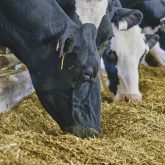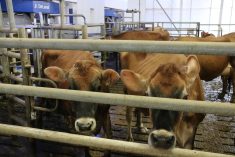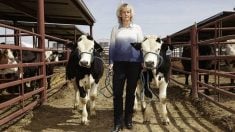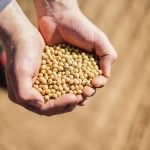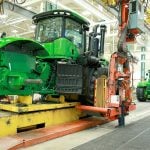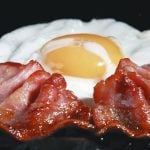Innovations and technology showcased at the world’s leading trade fair for animal production made clear that livestock farmers around the world face similar challenges.
Technology at EuroTier 2024 in Hanover, Germany focused on major trends, including animal health and welfare, emissions reduction, and improved productivity in the face of labour challenges.
Why it matters: Innvovations in livestock production can help farmers be more efficient and improve animal welfare.
Read Also
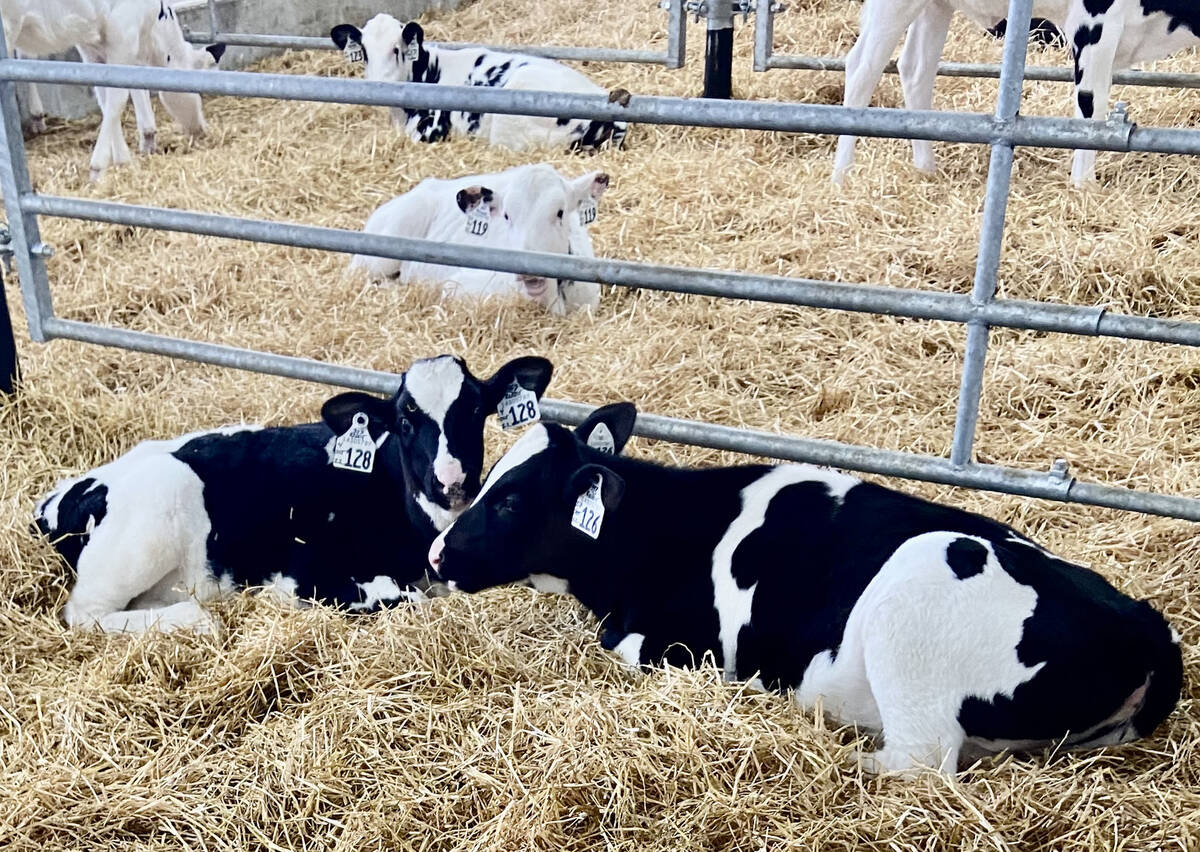
Back to the drawing board for sexed semen fertility ratings
Lactanet, the national genetic evaluation and dairy data provider, goes back to the drawing board with its sexed semen fertility rating index prototype.
Robotics, automation, digital solutions and sensor tech filled the fairground’s 13 halls.
The DLG (German Agricultural Society) welcomed nearly 120,000 visitors to Hanover Messe in Germany for EuroTier.
Weighing options
The accurate weighing of animals not only allows producers to monitor health and performance, but also provides them with a powerful decision-making tool. Several exhibitors offered innovative solutions, both for pigs and poultry, that automatically weigh livestock, freeing producers up to focus on other tasks.
Big Dutchman, for instance, launched a cordless broiler scale, called EasyCheck, that offers continuous weight recording. Daniel Holling, head of business development, said the scale offers flexibility, as it can be easily moved from one building to another. The data the scale collects is sent to a cloud-based farm management system where producers can track growth development, feed conversion and uniformity in their flock.
The condition of pregnant sows is an important factor for economic success, but weight alone is meaningless if it does not consider body condition. To help producers properly assess body condition, Austrian company Schauer developed Body AI Score, a camera-based system that records and analyses the condition of sows. It uses a gold standard that’s been determined by medical engineers. Body AI Score has undergone two of three years of validation at the University of Vienna.
Similarly, Spanish manufacturer Rotecna developed an individual electronic feeding system called Bodycheck. Using a camera, an ear tag and artificial intelligence, Bodycheck determines the body condition of pregnant sows and adjusts feed levels accordingly. The company says the technology helps ensure proper gilt development, and improves the health and productive performance of sows.

Swedish company Smart Agritech Solution developed Pigxcel, a similar tool that combines camera technology and artificial intelligence to automatically weigh pigs. The technology helps producers best determine when pigs reach their optimal weight.
“Especially in Europe, where slaughterhouses are a lot smaller, farmers have to deliver a certain amount of quality meat to different places,” explained Per Eke-Göransson of Agritech Solution. “If they know in advance, they can probably get you a better price.”
Autonomous feed pushers offer solution to labour challenges
Every year, DLG highlights robotic solutions in a special arena where visitors can watch live demonstrations. This year DLG featured autonomous feed pushers for cattle barns. The presentations allowed visitors to see the different robots in action. Autonomous units on display included Lely‘s Juno J2, Sveaverken’s RoboPusher Nimbo, CRD’s Alim’Slim, Schauer’s Faro, Wasserbauer’s Butler Gold, and Moov 2.0 from JOZ.

Canadian company Rovibec featured its automatic feed pusher, Ranger. While Rovibec sales manager David Bollé admits Ranger is not sexy in design, he said the unit has garnered interest in Europe because of its robustness and ability to work under tough conditions.
“They are really tough in design,” he said.

Self-operating sanitary solutions
One of the biggest drivers of innovation is the ongoing challenge of labour shortages. Increasingly, producers look to automated solutions to replace manual labour. This is no different in the hygiene and sanitation department. Swedish manufacturer Envirologic, for instance, developed EVO Cleaner, a washing robot for pig barns. Using a simple joystick, producers teach the robot optimal washing routines according to the design of the barn and its washing needs.
Similarly, Big Dutchman developed Sharky 430, a cleaning robot for aviary systems. Sharky 430 offers flexible programming and is slim in design. Its cleaning arm with nozzle allows for deep cleaning even in the most hard-to-reach corners.
Big Dutchman won a silver Innovation award for Sharky 430.
For poultry producers, Taiwanese company iChase developed AI Bird Repeller, a Class 38 laser that uses artificial intelligence to locate and deter potentially disease-carrying wild birds from landing in designated areas around the barn. The laser can rotate 360° horizontally and -85° to +20° vertically. It has a range of up to 200 meters, depending on conditions and bird size. iChase designed AI Bird Repeller with the aim of lowering the risk of avian influenza on farms.
Prioritising comfort and welfare
Europe is known for its stringent animal welfare regulations, which means it’s the continent to watch when it comes to launching new animal welfare-friendly technology. When France and Germany announced a ban on male chick culling, set to begin Jan. 1, 2022, there was no readily-available technology to detect gender in-ovo on the market. Since then, manufacturers have been working hard to develop solutions that sex embryos quickly and cost-effectively before day 12. Currently, there are European hatcheries working with one of five accepted solutions.
The newest arrival to the market is Omegga One, a solution that uses AI-powered spectroscopy to identify embryo gender. Omegga’s technical director Til Nöllgen said the solution could lead to further uptake, as it is both cost-effective and non-invasive. It also offers earlier sexing – before day seven, which exceeds current animal welfare legislation – in comparison to its competitors.
Omegga One was awarded a silver Innovation medal at EuroTier. The solution should be on the market by the middle of next year.
The manual catching of broilers, if done too quickly or incorrectly, can lead to injuries and even losses. Danish company Chicken Cat has developed a tool by the same name for fast and humane loading of broilers. The innovation not only addresses labour challenges, but it is also highly efficient. It can catch up to 9,000 broilers in an hour.
Chicken Cat consists of a hydraulically-driven collecting-head system with rubber finger-like protrusions that pull the birds towards a 21-24 metre conveyor. Chicken Cat is telescopic and the loading platform is able to turn containers around, as needed.
EuroTier 2024 took place between Nov. 15 and 18. The trade fair will take place again Nov. 10-13, 2026.





